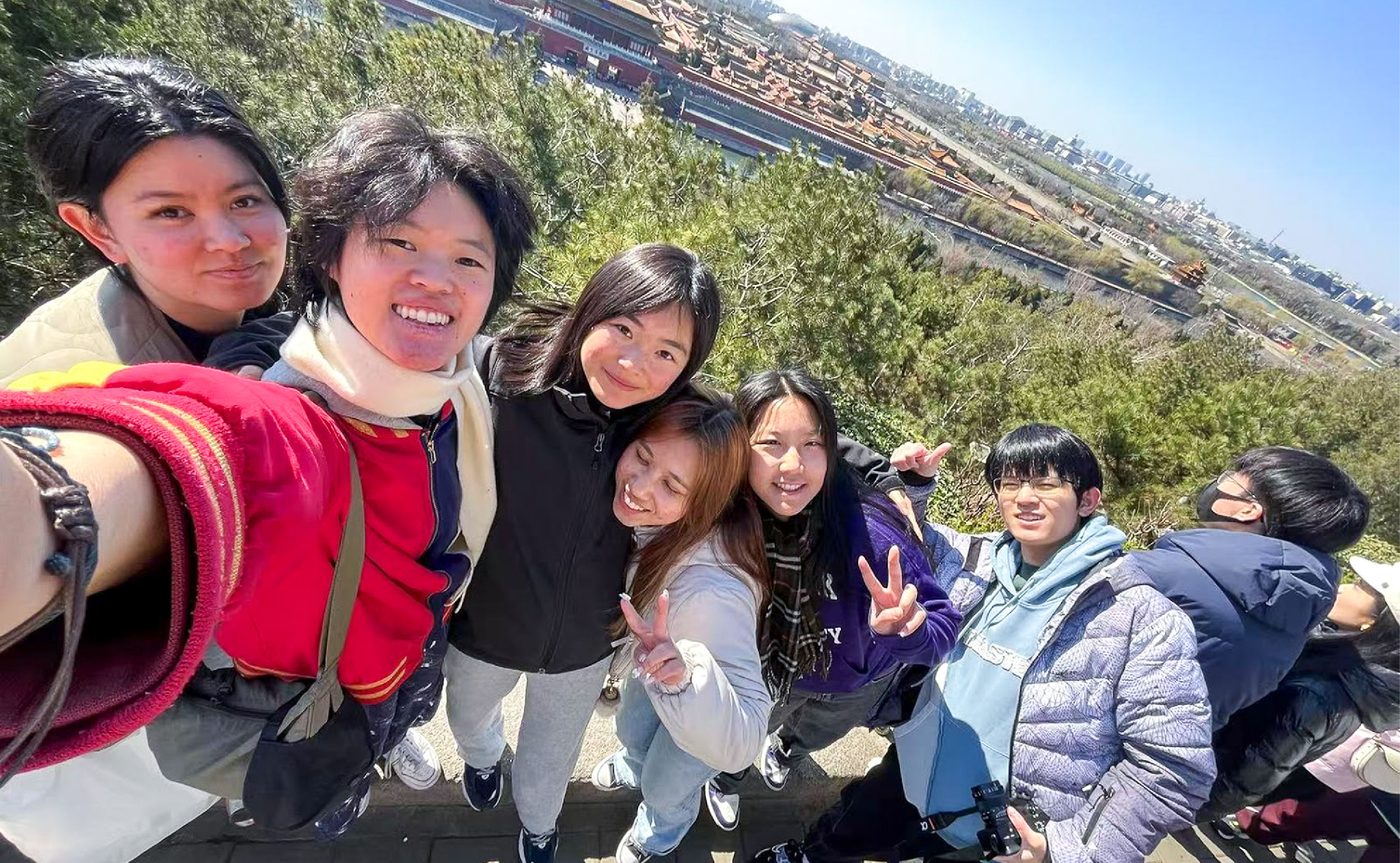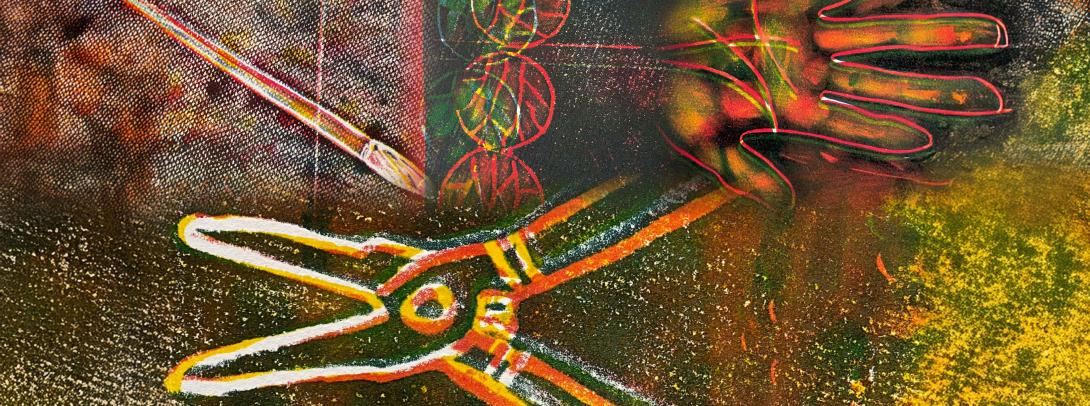A factory might seem an unlikely site for art creation, but that’s where nine students found themselves earlier this month, leading a printmaking activity as part of a trip exploring collaborative art practices designed and led by Associate Arts Professor of Visual Arts Monika Lin in collaboration with Susan Dai from the Community-Engaged Learning Office.
The printmaking activity, "Community Narratives,” focused on everyday objects as symbols of memories, place, and identity, and encouraged the students to connect and create with factory workers at Bernard Controls, a French valve manufacturing facility on the outskirts of Beijing. They spent a full day at the factory, interacting with the workers and assisting them in their art creation while experimenting with their own works.
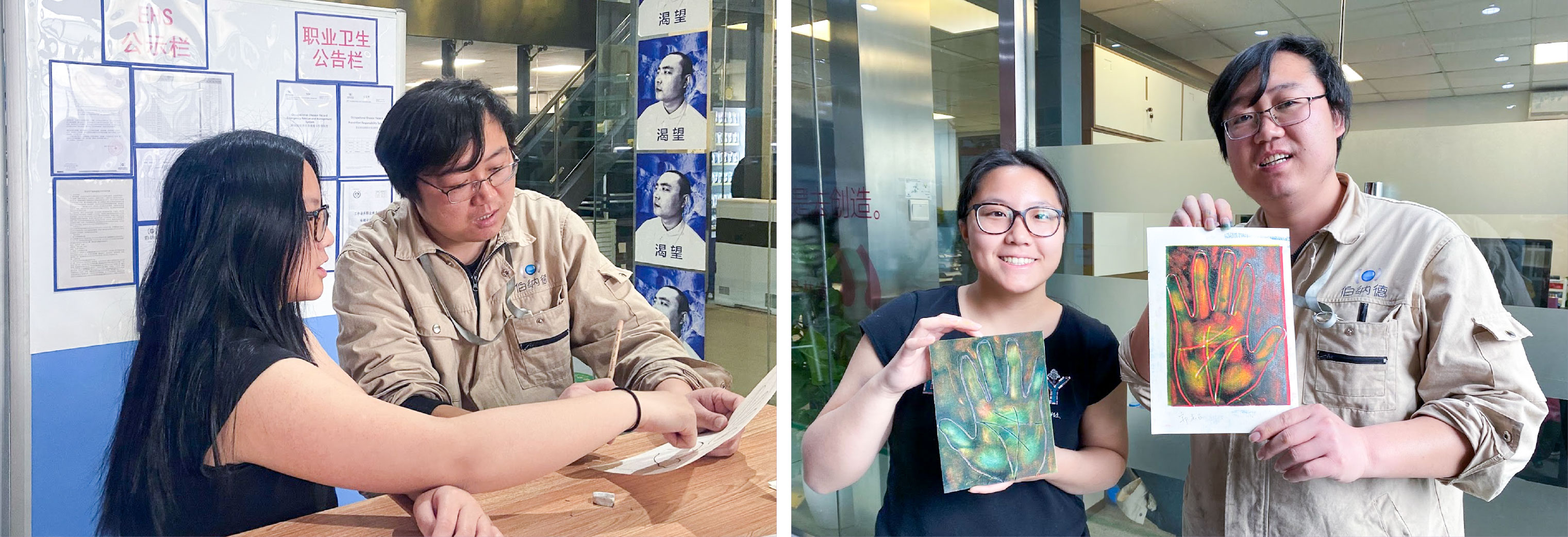
The students, who hail from China, the US, and Guatemala, learned about the factory workers’ lives through the objects they had brought, then led them through the steps of printmaking. The activity required the students, with varying degrees of fluency in Mandarin, to make a connection with the workers as they led them throughout the activity.
For some of the international students, the experience was as much about art creation as about Chinese language immersion. “I’m used to being around Chinese [language] and not understanding, but now I’m actively trying to speak and understand instead of just sitting there and doing nothing,” said Amelie Woc ’28. “It inspired me to learn more.”
The activity was in partnership with Social Sensibility, a collaborative art project that brings artists into the factory to create art together with workers. Founded by Italian artist Alessandro Rolandi and coordinated by Chinese artist Zhao Tianji, the project has brought more than 40 artists into the factory over the past 15 years. Several of the factory workers have had their art works displayed in exhibitions in Beijing and abroad.
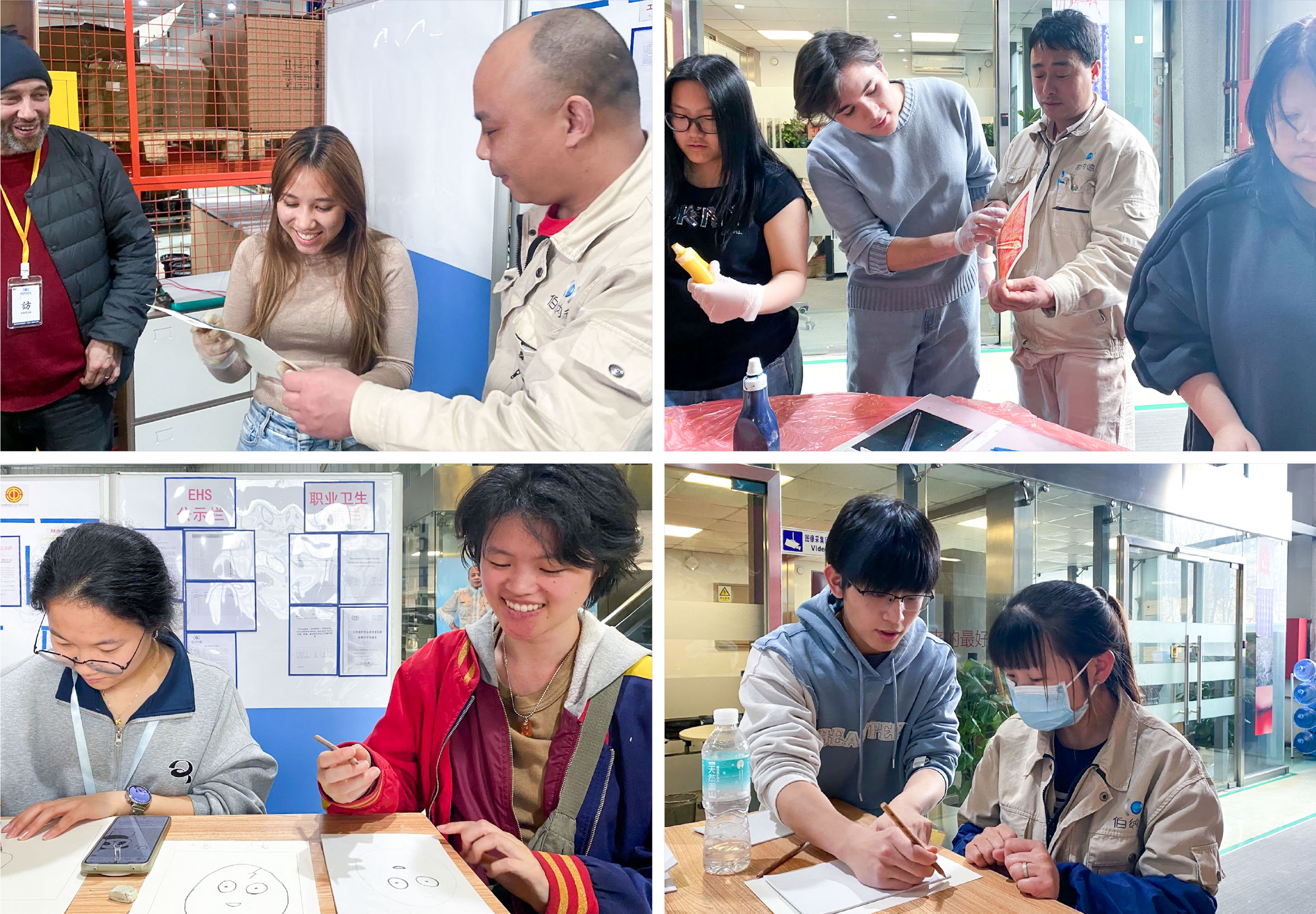
The two artists were on site during the activity to introduce the project and the concept of collaborative art processes to the students. “You’re not coming as a teacher or a therapist,” Rolandi told them. “You’re coming for an encounter.”
Zhao reminded them that the day’s activity was not about the outcome, but rather the process. “It’s not important, the art you create,” she said. “It’s the time you spend with people.”
Evidence of collaborative art pieces were present throughout the factory with photography and art works hung on the walls above the factory floor and among the workstations. The activity was held in the workers’ rest area, just a few steps away from workers doing assembly work.
Wu Shuqing, who works on assembly and new employee training at Bernard Controls, pulled out a pair of pliers from her work apron and began drawing it, alongside Deven Mangar ’28. “This is just a tool that I use every day for work,” she explained over the din of the factory floor. Then she traced it, transferred the image to a printing plate and began inking and printing the image, layering color upon color until the final result was a rich interplay of patterns and hues.
Guo Longfei, who works on wiring and assembly at the factory, created a detailed print of the palm of his hand with the support of Bonnie Chang ’28. Under Professor Lin’s guidance, he experimented with techniques to expose layers and add the markings and folds of his hand to the final piece. “At first I thought perhaps I’d print only one color, but I couldn’t have imagined the three-dimensional quality and the colors of the final result. I’m quite happy with it,” he said.
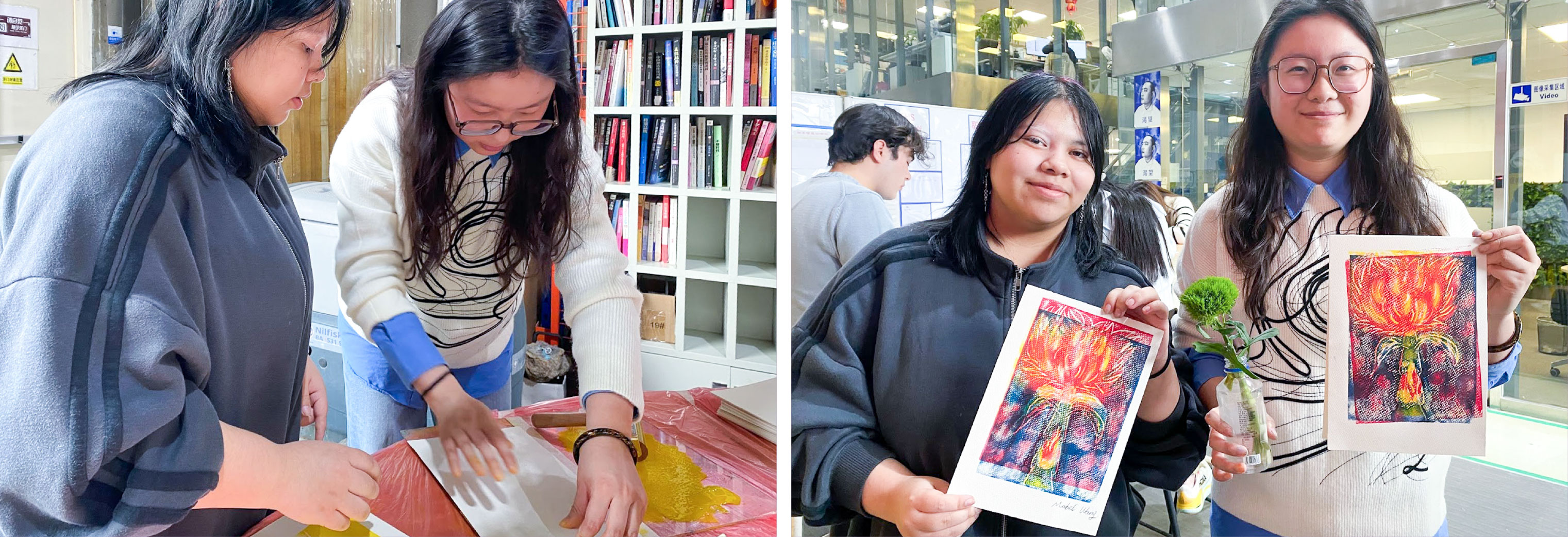
Bai Jihong, who works on mechanical assembly, made a tri-color print of his calligraphy brush. “I like the way it turned out, with the fiery red coming through,” he said. Bai, who has spent the last twenty or so years away from his home province of Gansu, said the brush has meaning for him because he uses it to create calligraphy, recording memories of his hometown.
The students said they walked away from the experience with a greater appreciation for how art can connect people. “Doing art with people is a good way to start a conversation,” said Maile Lynn ’28. “I thought it was a good space to be able to talk with some of these people that I wouldn’t normally talk to.”
Lin Runjie ’28 said he worried that the activity would be tiring and energy-consuming but that he came out feeling energized. “Although we have different roles in society, we both identify as creators [who] want to mutually facilitate each other in the process of creating art,” he said, adding that he was inspired by his collaboration with Gao Dongmei. “Her approach to coloring also triggered me to try to use layers of paint later on.”
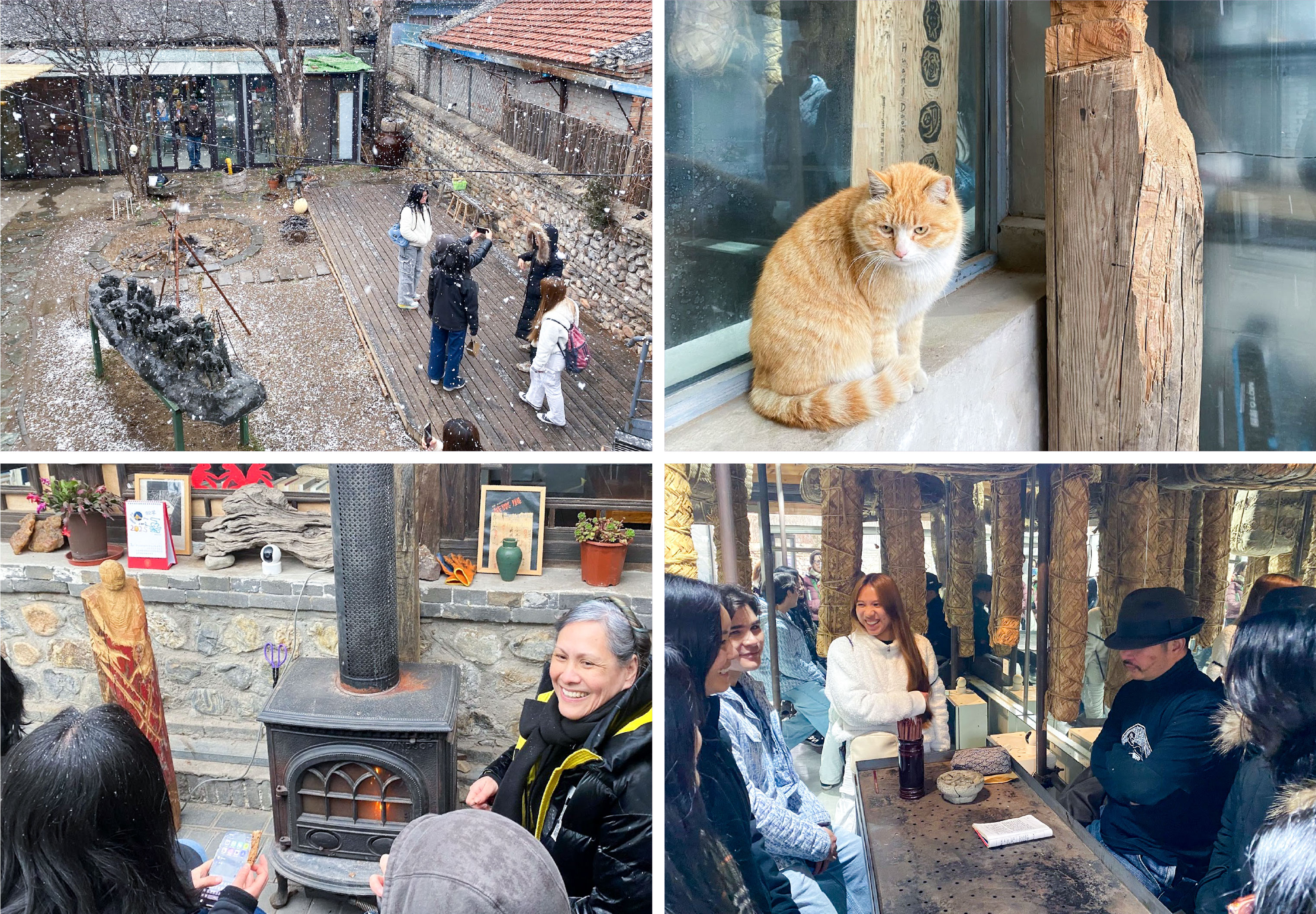
After experiencing collaborative art practice first-hand, the students were ready to explore Beijing’s contemporary art scene. Professor Lin led them through exhibition spaces in the 798 Art District and then arranged a private visit to a studio on the outskirts of Beijing, where they participated in artist Huang Daoming’s collaborative art practice. On their final day, the group visited Beijing’s National Art Museum.
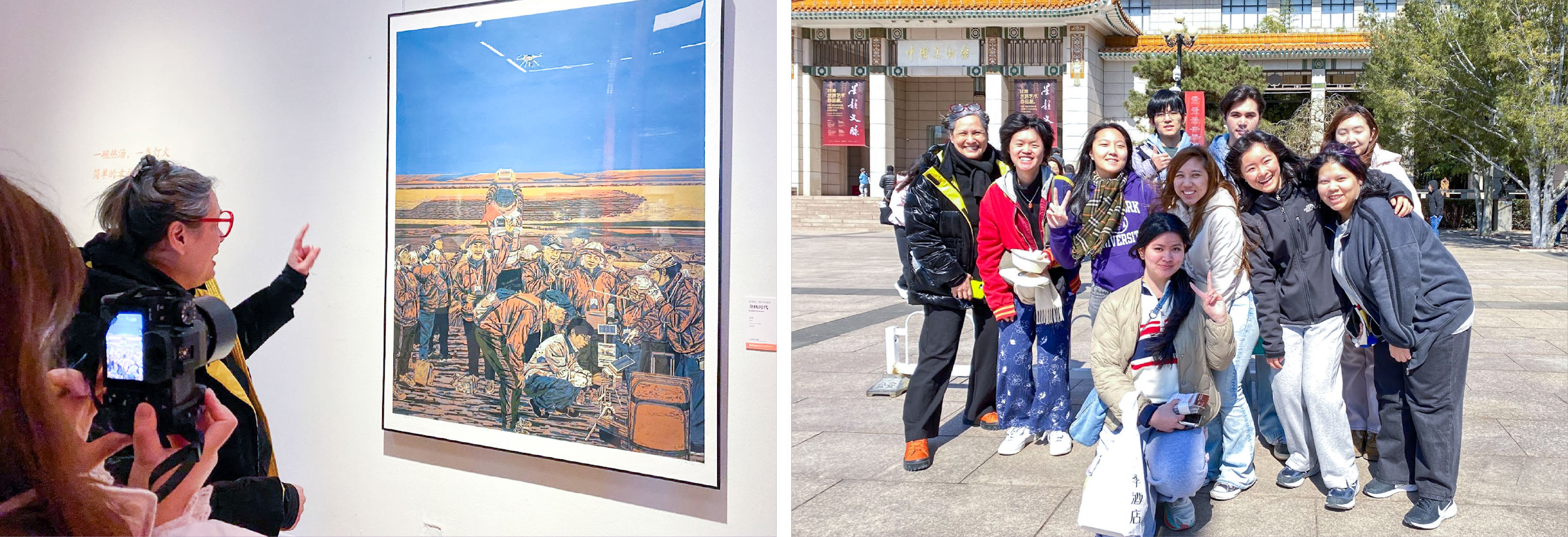
While the focus of the weekend was on contemporary art, there were plenty of opportunities to experience local culture as well. The group bonded over shared meals of Mongolian hot pot and Peking duck, snapped photos together during an unexpected snow flurry, and enjoyed a morning hike for a stunningly clear birds-eye view of the Forbidden City.
As they said their goodbyes, Amelie Woc reflected on the experiences they shared, so different from a typical tourist itinerary of the capital. “This makes it even more unique, because it's an experience no one else gets to have,” she said.
